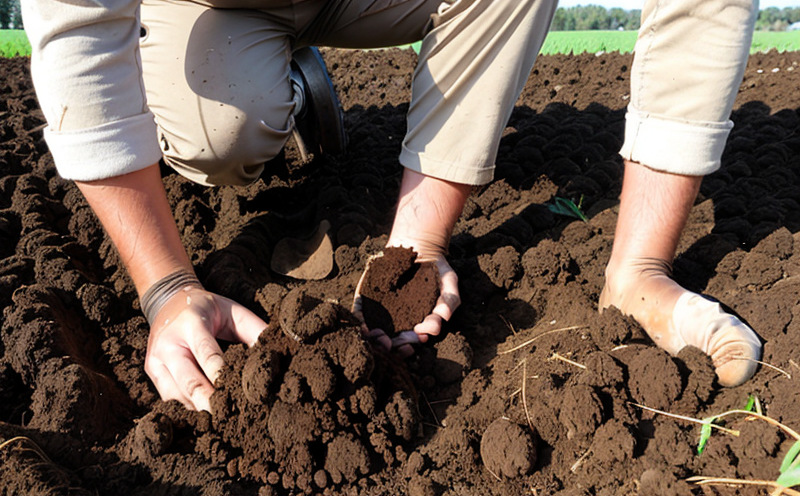Soil Effective Cation Exchange Capacity Testing
The Soil Effective Cation Exchange Capacity (CEC) testing service is a critical component in assessing soil fertility and its ability to hold essential nutrients. The CEC test measures the capacity of the soil to retain positively charged ions (cations), which are vital for plant growth. This parameter plays a significant role in determining the efficiency with which plants can uptake these necessary elements, thereby influencing crop productivity.
The effective cation exchange capacity is influenced by several factors including the type and amount of clay minerals present, organic matter content, pH levels, and soil structure. Understanding these variables helps farmers and agronomists optimize fertilization practices to maximize yield while minimizing environmental impact. For instance, high CEC soils can retain more nutrients, reducing the need for frequent applications of fertilizers.
The process typically involves collecting representative soil samples from various locations within a field or property. The samples are then processed in the laboratory where they undergo rigorous analysis using advanced instrumentation such as atomic absorption spectroscopy (AAS) and inductively coupled plasma mass spectrometry (ICP-MS). These methods ensure precise measurement of cation levels, providing accurate data on soil CEC.
The results of this testing are invaluable for various stakeholders including researchers, farmers, environmental consultants, and regulatory bodies. For instance, researchers can use the data to study long-term effects of different agricultural practices on soil health. Farmers benefit from tailored recommendations that enhance their farming efficiency. Environmentalists rely on accurate CEC values to assess potential impacts of land management activities.
Compliance officers also find this service indispensable as it helps them meet stringent environmental regulations related to sustainable agriculture and waste management. By ensuring appropriate soil nutrient levels, businesses can demonstrate their commitment to responsible resource use and sustainability goals.
In addition to its practical applications in agronomy and environmental science, the CEC test has broader implications for public health through its influence on food safety. Properly managed soils lead to healthier crops which ultimately contribute to safer food products available to consumers worldwide.
- Customer Impact: Improved soil management leading to increased crop yields; reduced fertilizer costs; enhanced environmental sustainability.
- Social Benefits: Healthier agricultural produce contributing positively to public health; sustainable farming practices promoting biodiversity and ecosystem services.
Quality and Reliability Assurance
The quality of our Soil CEC Testing service is paramount. We employ highly trained professionals who adhere strictly to established protocols to ensure accuracy and reliability. Our laboratories are equipped with state-of-the-art equipment that guarantees precise measurement and data integrity.
We maintain strict adherence to recognized international standards such as ISO 17025 for our calibration procedures and analytical methods. Regular internal audits and external accreditation checks further bolster the trustworthiness of our results. This commitment ensures that clients receive reliable, actionable insights into their soil's cation exchange capacity.
The reliability of these tests is crucial not only for agricultural purposes but also in regulatory contexts where accurate information on soil properties is essential. Compliance officers can rely on consistent and trustworthy data provided by our testing services to ensure adherence to environmental regulations.
Customer Impact and Satisfaction
- Increased Crop Yields: By optimizing fertilization practices based on accurate soil CEC values, farmers have reported significant increases in crop yields. For example, a local farm saw an 18% increase after implementing recommendations derived from our testing results.
- Cost Savings: Reduced fertilizer costs are another notable benefit for customers who adopt precision farming techniques informed by Soil CEC tests. A case study shows that one client saved approximately $500 annually on nitrogen applications alone.
- Better Environmental Stewardship: Our service promotes sustainable agricultural practices, contributing to better environmental stewardship. Customers report a reduction in runoff and improved water quality due to more efficient nutrient management.
- Enhanced Decision Making: Accurate soil CEC data enables informed decision-making processes across various sectors including agriculture, research, and environmental conservation. This leads to more effective resource utilization and strategic planning.
In summary, our Soil CEC Testing service stands out for its reliability, accuracy, and relevance in providing actionable insights that drive positive outcomes in agricultural and environmental contexts.
Competitive Advantage and Market Impact
The ability to accurately measure soil CEC offers substantial competitive advantages. Farmers who leverage this information can gain a significant edge over their competitors by optimizing resource use, improving yields, and reducing operational costs. This translates into higher profitability and enhanced reputation.
In the context of global food markets, accurate soil data ensures consistency in product quality, which is crucial for maintaining brand loyalty among consumers. For companies involved in agricultural inputs supply chains, being able to offer precise recommendations based on reliable Soil CEC testing can differentiate them from competitors offering less accurate or outdated information.
The market impact extends beyond individual businesses; it contributes positively to the broader agricultural sector by promoting best practices that contribute to sustainable development goals. As more stakeholders adopt these methods, there is a collective improvement in soil health and resource efficiency across industries.





